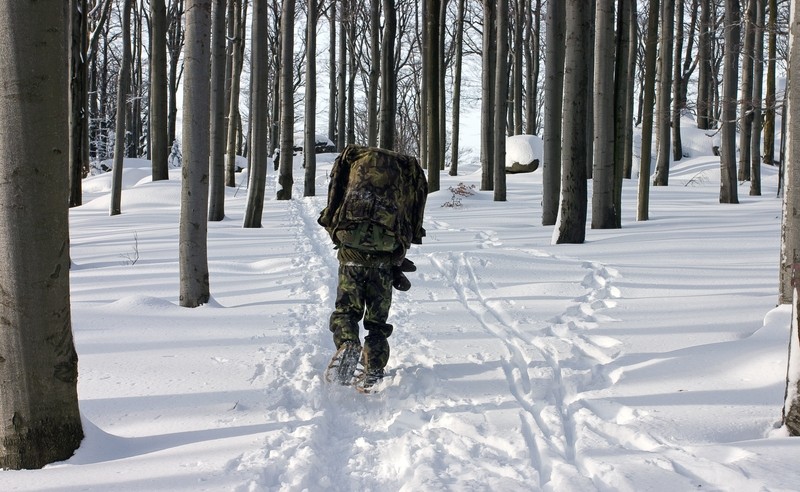Walking out of a winter survival situation unscathed requires common sense and some basic preparation.
While you likely will never be able to refer to your plight as “comfortable” you can by preparing ahead, render your situation survivable. Here are some tips how:
The biggest concern in wintertime is keeping warm. Prolonged exposure to freezing temperatures can sap your body’s energy reserves, just trying to keep warm. Even so, it’s much harder to keep warm in the winter, due to lowered temperatures, high winds, difficulty in finding fuel and difficulty in even starting a fire.
Preparing to Survive in the Winter
While surviving in any sort of situation is much easier if you have the right equipment and supplies with you, it’s even more important in winter. While there are ways of keeping yourself warm, even if you don’t have the right clothes with you, it’s much harder to do. So, the first part of surviving in the winter is making sure that you are prepared.
Let’s start with clothing. There are a lot of people who don’t dress appropriately for the cold weather. If you want to wear stylish clothes, that’s fine; but don’t limit yourself to just having those clothes with you. Ladies, that cute little jacket might look great, but it probably won’t keep you warm. If you’re wearing a dress or skirt, take blue jeans along, as well. Make sure you take a warm coat, a hat, some gloves and some warm boots with you. That way, if you get caught somewhere, you’ve got something warmer to put on.
Most clothing loses its insulation value if it becomes wet. Down is the worst for this, making you lose your body heat 300 times faster than if you were naked. The best clothing for retaining body heat if it gets wet is wool. Even when soaking wet, wool still retains 50 percent of its insulating value, and it is the only fabric that will. Keep that in mind when choosing between a wool stocking cap and a polyester one.
It is best to dress in layers if you are trying to keep warm in the winter. Layers provide better insulation, as well as the option of being able to take off layers if you get too warm. Your outer layer should be made of a material that blocks the wind well, or all the insulating layers below it won’t be anywhere near as effective.You’ll also need more calories to burn in the cold. Add some high carbohydrate food bars and other snacks to your everyday carry bag. Your body will be burning a lot of calories just to produce heat. While this may seem like a great time to lose weight, your body probably won’t be able to convert fat to heat quickly enough. You’re better off providing it with some other calories to burn, ensuring that there is enough energy in your body to produce the necessary heat.
Finally, you’re going to have more trouble starting a fire in the winter than you would in the summer. Dry wood and especially dry tinder is much harder to find. So, you’ll need to carry fire starters that can overcome the damp in the wood, as well as including their own tinder. Here are three that I recommend:
• Cotton balls soaked in petroleum jelly – Work the petroleum jelly into the cotton ball with the back side of a spoon, until it is well-saturated. Will burn for about three minutes.
• Dryer lint and candle wax – Dryer lint and cotton balls are almost the same thing. Make balls out of the lint and put them into the cups of a cardboard egg carton. Pour melted wax into the cups as well, soaking the lint with the wax. The wax doesn’t need to totally fill the cup, just to soak the lint. Burn time depends upon how much wax you use.
• Black powder and nail polish remover – Put fine black powder (#FFFFg) into a bowl and cover it with oily nail polish remover. You must use the type that has acetone in it, so check the label. Knead the two together, making a putty out of it. Knead this to make a layered ball. The finished fire starter must be stored in an airtight container, as the acetone will try and evaporate out. Once dry, this fire starter loses its effectiveness. This type of fire starter will burn at over 3,000 degrees Fahrenheit for over three minutes, making it great for damp wood.
Proper clothing, shelter and fire are three fundamentals to surviving in the outdoors in winter.
If you think ahead, before you encounter a survival situation and have the tools you need on hand, your chances of making it through until you can either extricate yourself or help comes along increase exponentially.
The more prepared you are for a winter survival situation, the greater your chances of survival. It is that simple.
To read the entire article and received additional tips on surviving a winter situation, visit our friends at Off the Grid News.
